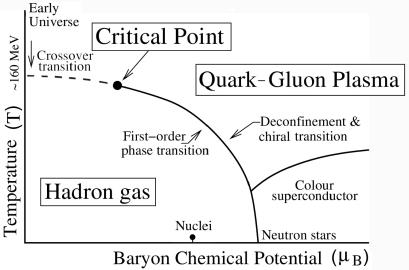| GO BACK (DESKTOP VIEW) | GO BACK (MOBILE VIEW) |
Simulation of a Phase Transition Induced Neutron Star Collapse
Student:TBD Mentors:Sanjay Reddy (INSPIRE-HEP, email: sareddy@uw.edu) John Stroud (ResearchGate, email: jstroud3@uw.edu) Prerequisites:A basic understanding and experience using computers for scientific |
Image Credit: Gauss Centre |
What Students Will Learn:The student will learn the basics of gravitational wave astronomy and general relativistic hydrodynamics. They will learn to utilize a linux/unix shell to run simulations on a HPC system and they will utilize scripts and write their own scripts to analyze gravitational wave data from the simulations. Students will learn to use modern numerical relativity codes to design and run their own simulations. Expected Project Length:1-2 quarters Project Description:Neutron stars are among the most extreme objects in the universe, composed of compressed subatomic particles, they pack the same mass as the sun into the size of a city. At such high densities the theory of QCD, which describes nucleons in terms of their constituent quarks and gluons, predicts that nucleons will begin to dissolve into their constituent quarks creating a new Neutron stars provide environments which may realize the hadronic to quark matter phase transition, and so through studying their properties we may be able to learn more about the During this project the student will gain experience in utilizing high performance computing (HPC) systems to prepare and run simulations and analyzing data from simulations to run modern numerical relativity and hydrodynamic codes. Some basic programming experience with python is preferred but no prior HPC experience is necessary. Students will gain familiarity working in a linux/unix environment. The student will meet regularly with the mentors during the course of the project to assess progress and contribute to the students overall success. References:[1] Milva G Orsaria et al 2019 J. Phys. G: Nucl. Part. Phys. 46 073002 [2] Bailes, M., Berger, B.K., Brady, P.R. et al. Gravitational-wave physics and astronomy in the 2020s and 2030s. Nat Rev Phys 3, 344–366 (2021). https://doi.org/10.1038/s42254-021-00303-8 |

